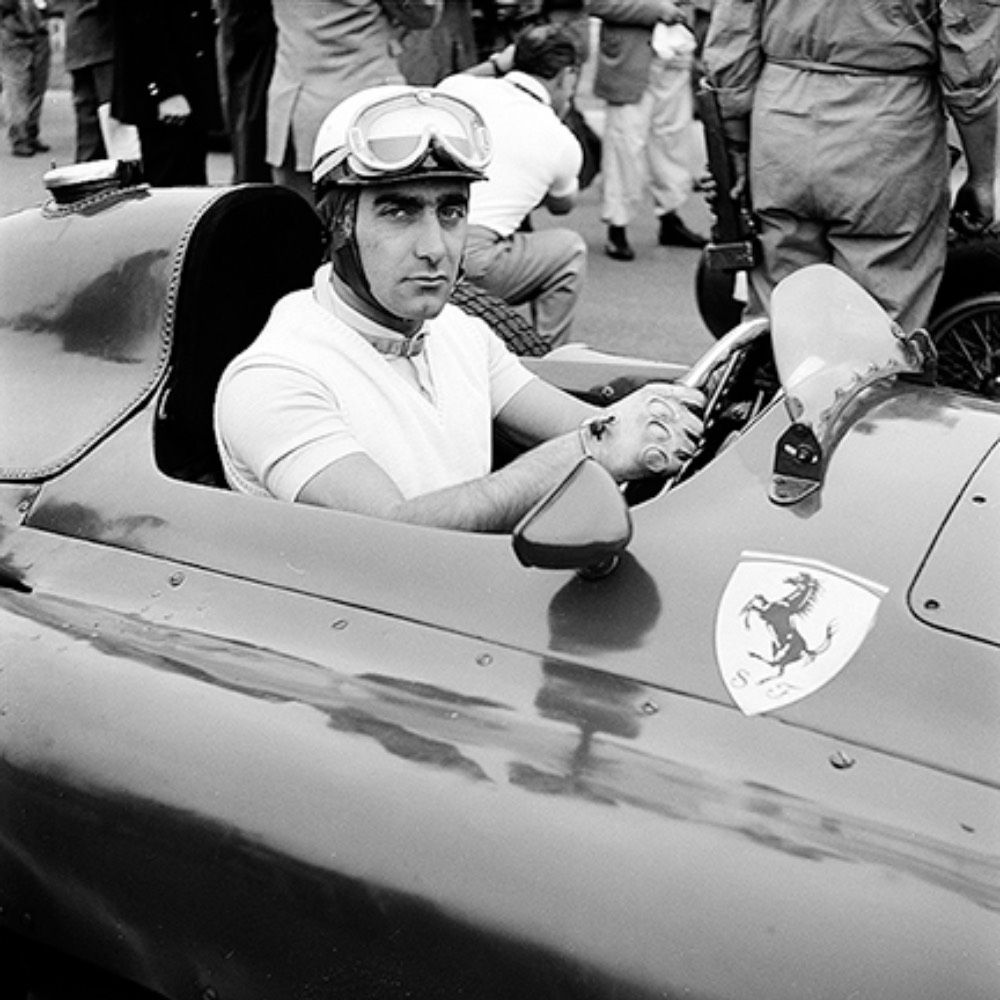
Eugenio Castellotti
Career Statistics
Biography
Eugenio Castellotti (10 October 1930 - 14 March 1957) was an Italian racing driver who competed in Formula One from 1955 to 1957, participating in 14 World Championship Grands Prix and achieving three podiums while scoring 19.5 championship points, but who is remembered as much for his striking good looks, glamorous lifestyle, and tragic death as for his considerable driving talent, which saw him hailed as the natural successor to Alberto Ascari as Italy's greatest racing driver. Born in Lodi, Lombardy, and raised in a wealthy family, Castellotti possessed both the financial means and the natural charisma to become one of motorsport's first true celebrity drivers, earning the nickname 'il Bello' (the Beautiful) for his film-star looks and fashionable appearance, which brought him significant media attention and made him a favorite subject of the Italian sporting press.
He began racing at the age of 20, driving a Ferrari 166 in sports car events, and quickly demonstrated the fearless, aggressive driving style that would characterize his entire career, taking his first major victory at the Portuguese Grand Prix sports car race in 1952 and following this with a win at the 10 Hours of Messina in 1953, establishing himself as a rising star in Italian motorsport. Castellotti made his Formula One debut with the Lancia team at the 1955 Monaco Grand Prix, immediately making an impact by finishing third to claim his maiden podium, and at the Belgian Grand Prix at Spa-Francorchamps, he became the youngest pole-position winner in Formula One history at age 24 years and 237 days, a record that demonstrated his raw speed and would stand for decades.
When Lancia withdrew from Formula One following Alberto Ascari's death in May 1955, Castellotti moved to Ferrari for the final three races of the season, taking another podium with third place at the Italian Grand Prix at Monza, which helped him finish third in the 1955 World Drivers' Championship standings despite competing in only a handful of races, an extraordinary achievement that confirmed his status as one of the sport's brightest talents. The 1956 season saw Castellotti emerge as a complete racing driver, excelling in both Formula One and sports car racing. In March 1956, he won the 12 Hours of Sebring in Florida, partnering with the legendary Juan Manuel Fangio in a Ferrari, and then achieved perhaps his greatest victory by winning the Mille Miglia, the legendary 1,000-mile open-road race through Italy, cementing his status as a national hero and fulfilling every Italian racing driver's dream.
However, his Formula One season proved frustrating as he struggled to match the pace of Ferrari teammates Fangio and Peter Collins, and he managed only a single podium finish, finishing the championship in a disappointing eighth place. Off the track, Castellotti's relationship with ballerina and actress Delia Scala brought him tremendous publicity, and the glamorous couple became fixtures of Italian high society, their romance covered extensively by gossip magazines and newspapers, adding to Castellotti's celebrity status beyond motorsport. The 1957 season began tragically when Castellotti's close friend and teammate Alfonso de Portago was killed in a horrific accident during the Mille Miglia in May, which also killed his co-driver and nine spectators including five children, an event that devastated Castellotti emotionally and would ultimately lead to the race's permanent cancellation.
Just weeks later, on 14 March 1957, Castellotti himself was killed during a private testing session at the Modena Autodrome, in circumstances that have been debated by historians ever since. According to reports, Enzo Ferrari had asked Castellotti to set a fast lap time at the Modena circuit to beat an unofficial record that had been set by Maserati driver Jean Behra, and Castellotti, eager to prove himself and possibly still emotionally affected by de Portago's death, pushed too hard during the test. At a chicane, his Ferrari 801 struck a high kerb, launching the car into the air and throwing Castellotti from the cockpit; his body was hurled more than 100 yards from the impact point, and physicians determined that the massive skull fracture he suffered caused instant death.
He was just 26 years old, his death cutting short a career that had promised so much and depriving Italian motorsport of its brightest star. The exact circumstances of the test session have been questioned over the years, with some historians suggesting that Castellotti may have been emotionally unstable following de Portago's death and that Ferrari should not have pressured him to set a fast time under such circumstances, while others have defended Ferrari's actions as standard practice for the era. Regardless of the controversy, Castellotti's death was a tremendous loss to Formula One and to Italian sporting life more broadly, as he represented a rare combination of genuine talent, charisma, and national pride that transcended motorsport.
Since his death, Castellotti has been remembered as one of Formula One's great 'what if' stories, a driver whose potential was never fully realized but whose brief career left an indelible mark on the sport's history, and his legacy as il Bello, the beautiful champion who died too young, has ensured his place in motorsport mythology alongside other tragic heroes of the 1950s. His story serves as a poignant reminder of the dangers that drivers faced during Formula One's early decades, when safety was virtually non-existent and talented young men routinely risked—and lost—their lives in pursuit of racing glory.